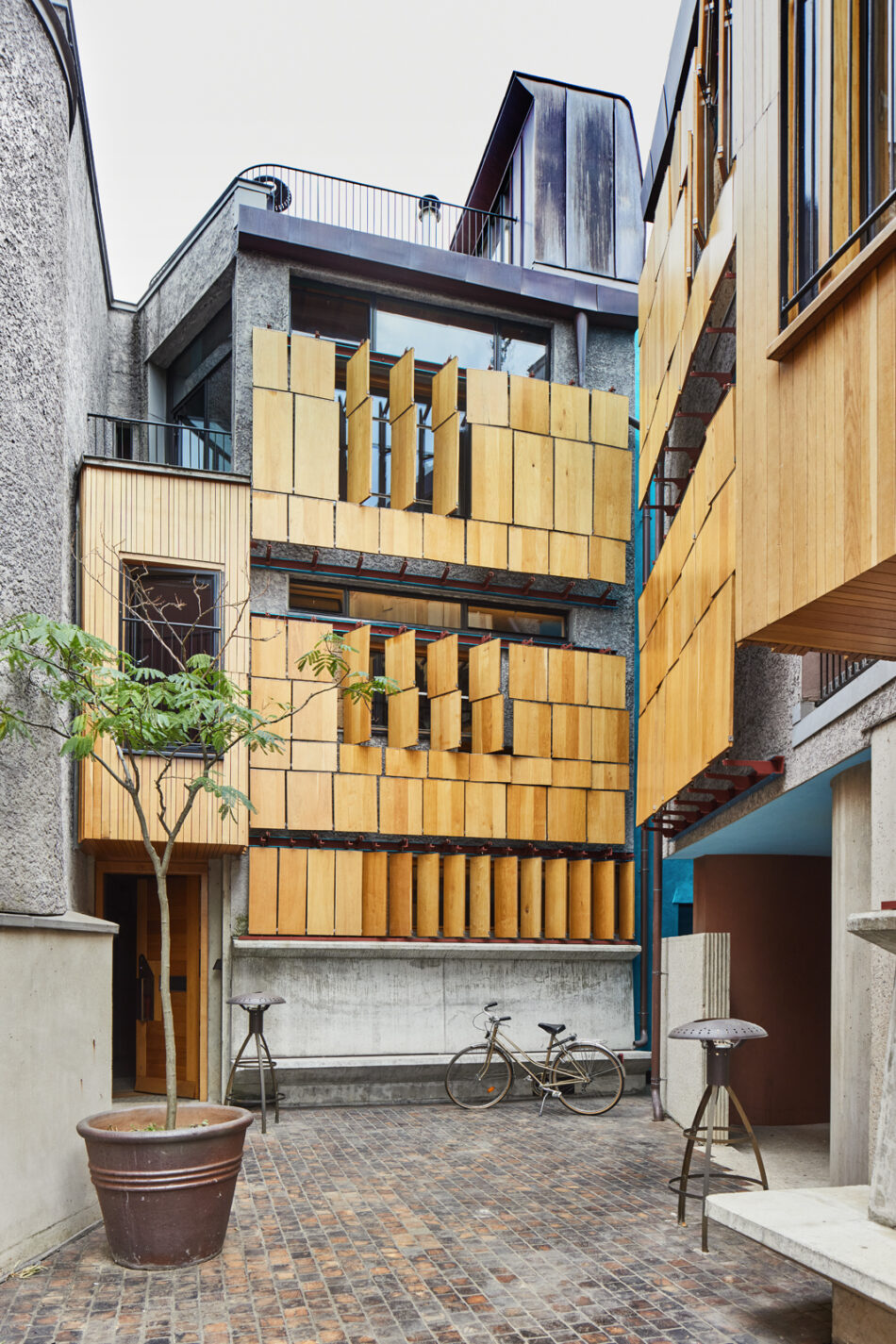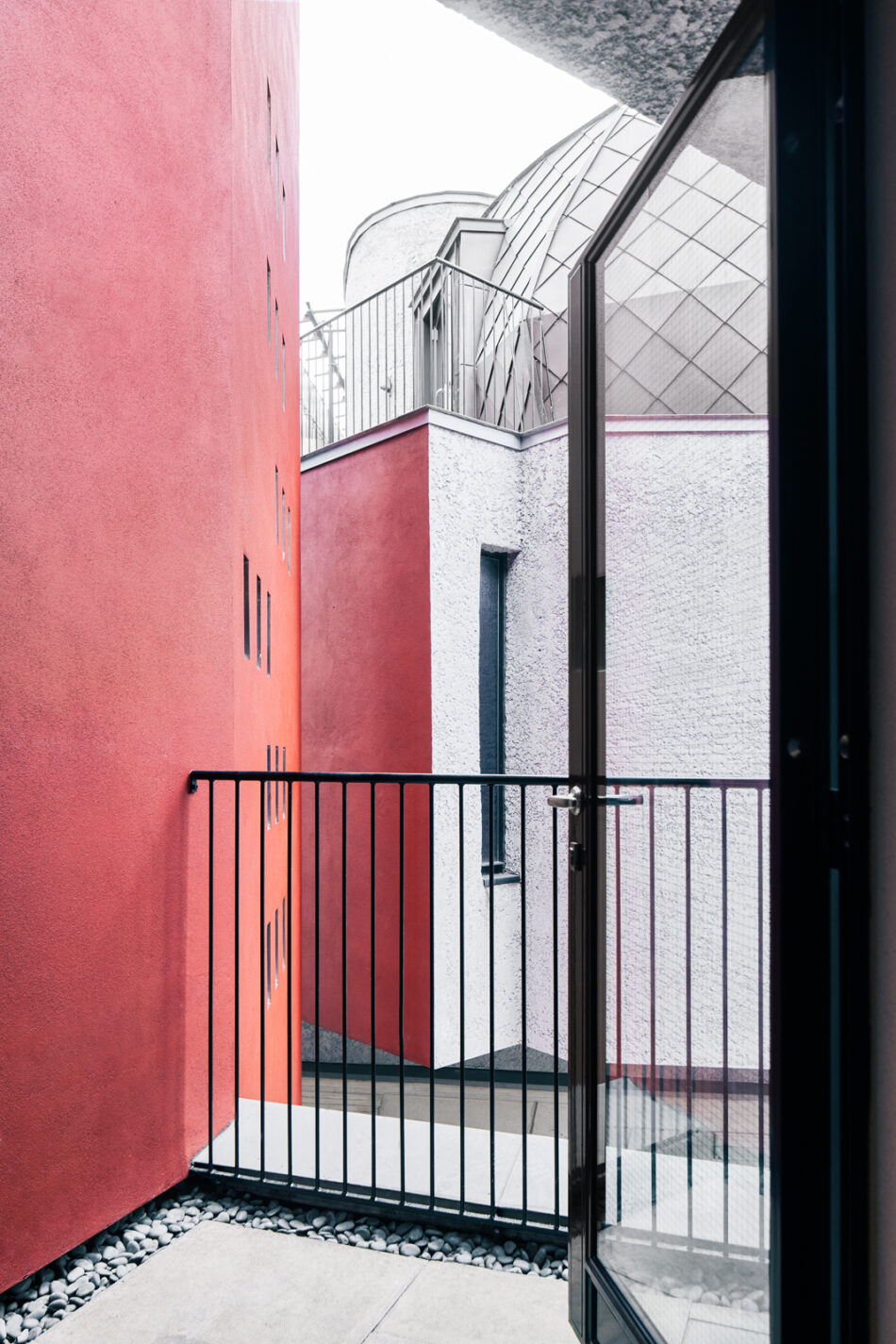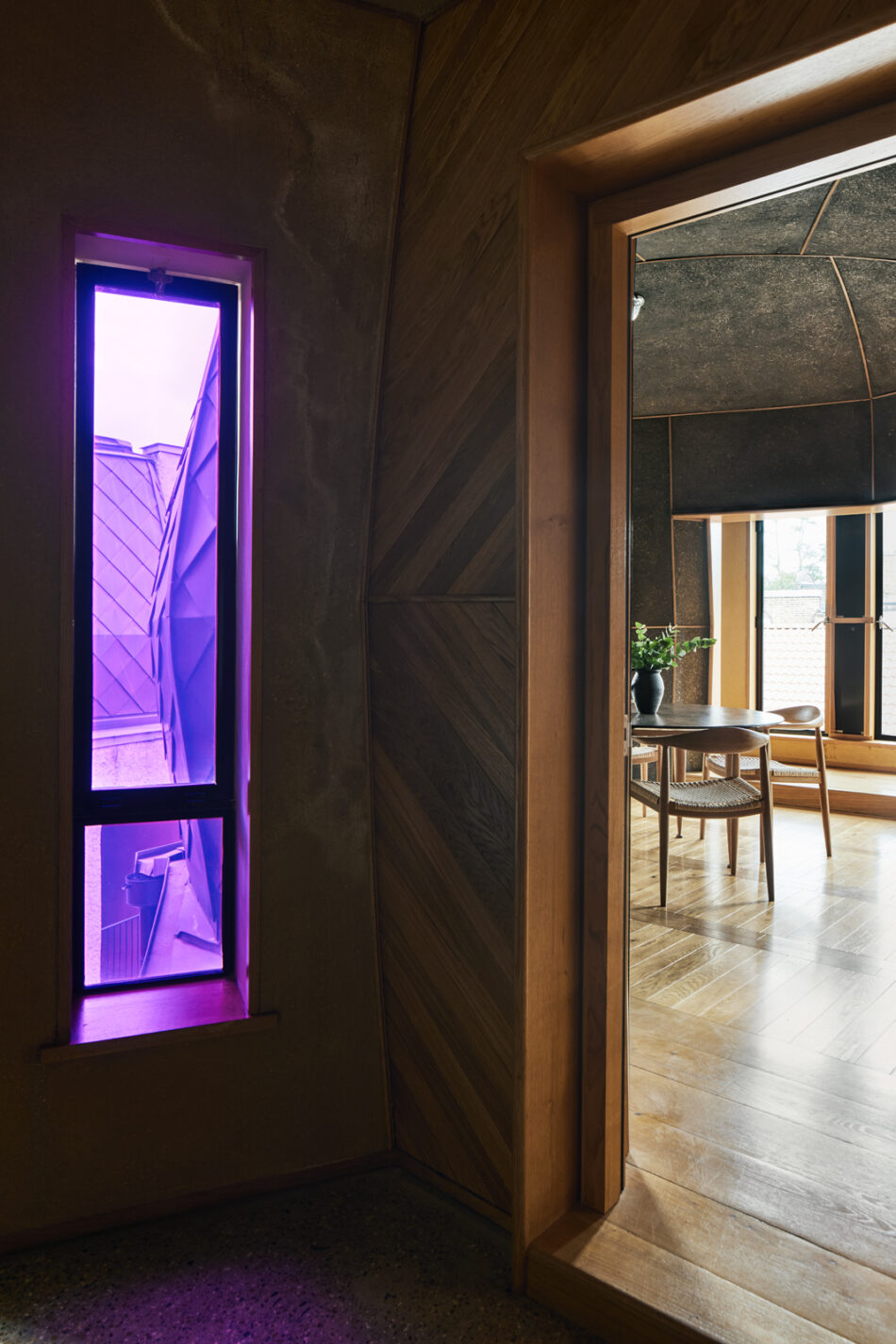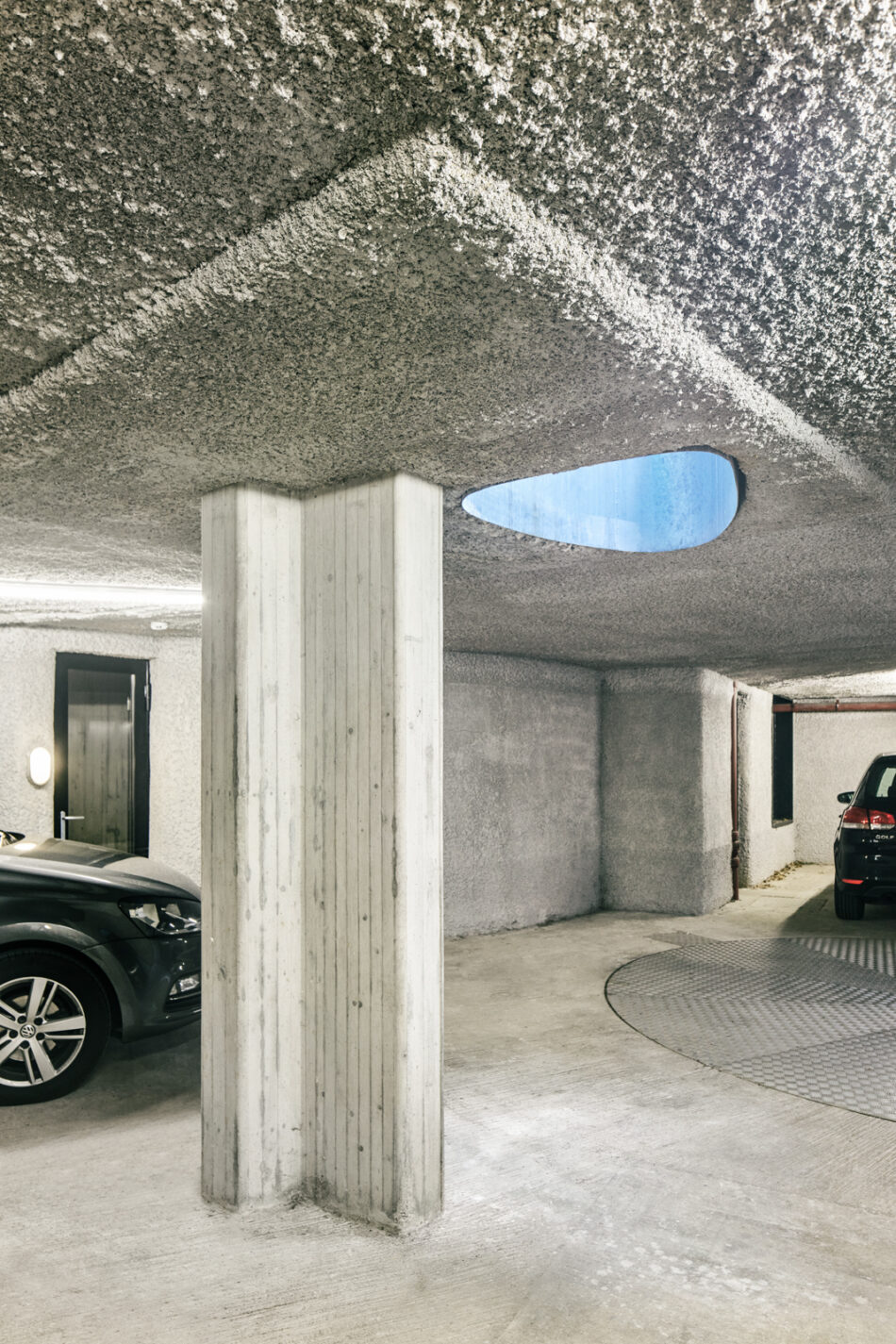


































Walmer Yard II
London W11
Designer: Peter Salter
Register for similar homes"A touchstone of the relationship between pragmatist and poet" – Peter Salter
A conquest of exquisite beauty and poetic inspiration, this three-bedroom home is one of four sublime interlocking houses discreetly situated around an open courtyard by the greenery of Avondale Park, between Notting Hill and Holland Park. The four houses are the first residential buildings in Britain by the architectural educator and designer Peter Salter and the project was the winner of the RIBA London Award in 2017. It is a manipulation of light and dark, of clay and concrete among myriad other materials, formed together by master builders and craftsmen from the wonderful organic drawings of Salter. Spanning 2,500 sq ft over four storeys, with a private roof terrace and secure underground parking, the house offers a captivating series of versatile living spaces and the rare opportunity to acquire a revered landmark of recent architectural history.
The Buildings
Walmer Yard replaces a Victorian warehouse, built on the brickfields between the 1840s Norland Estate and the Regency terraces of Ladbroke Grove. Nodding to the patchworks of lock-ups and stable yards and the functional mewses of postwar decades, while uniting the spectrum between modest facades and those grander compositions of Portland Road, the development offers a subtle, stealthy elevation, barely hinting at the architectural brilliance within.
Cast from in situ poured concrete, structured around rectangular and elliptical stairwells, each house fits within an interlocking plan arranged around an intimate central courtyard, oriented to receive sun from the south. The grouping evokes a proximity and communalism reminiscent of 17th-century planning, or its inspiration in part: the Lombardian commune of Sabionetta.
The layering of the shutters also provides privacy for each residence, and a changeable brise soleil, allowing shadow and soft light to be regulated internally as desired.
The Tour
Entry from the subtle façade on Walmer Road is through a series of steps enclosed on three sides by projecting elements from the two houses with street frontages. The approach through bronze entry gates provides a perspective that straddles defined eras of design, from neo-medieval through to modernist, postmodernist and expressionist.
The external courtyard has been designed as if it were a finely panelled internal room and was inspired by the timber-lined council chamber of Scuola Grande di San Rocco in Venice. End-grain oak blocks run underfoot, their natural grain a visual delight and their materiality a great absorber of footfall. Shutters too act as deflectors of sound and work with the acoustic render to degrade airborne noise. Low-level light fittings avoid light pollution at higher points of the façade and concrete benches are incorporated for a variety of purposes, be that the somewhere to place shopping as one fumbles for keys, a spot to adorn with plant pots, or simply a place to sit and converse with neighbours or friends.
Cast concrete fluting marks the threshold to the front door. Inside, the structure, volumes and materials are employed to create a series of rooms and circulation spaces that are precisely tuned to domestic use, private peace and sensory experience.
A cobbled hallway leads immediately right to a study or third bedroom, formed around a steel encased shower room with black mosaic tiling, with elements in Yves Klein blue and a clerestory of wired glazing, as used on other levels.
From the hall, the flooring becomes a stone-seeded, terrazzo-like polished concrete surface, with transitions to timber flooring in the bedrooms. To the left is the kitchen and informal dining space, descended by steps to the street level. The structural cast concrete is left bare to the walls as just one of the many evidences of craftsmanship throughout, achieving a monolithic sense of permanence and a surprising warmth. The operational elements of the kitchen and integrated appliances are too set within concrete. Hardwood joinery forms the cabinetry and wall panelling, and a single wall of clay provides a backdrop to the dining space. Beneath the kitchen is a media room, which could be used for a variety of purposes, and a utility room with route to the underground parking.
A carbonised steel staircase, with leather handrails, rises geometrically, beneath an illuminating oculus, to the upper levels. Two large bedrooms occupy the first floor, both with en suite shower or bathrooms, one with a balcony over the courtyard below. Light is reflected through coloured glass windows and soffit-level glazing across concrete ceilings, its canvas contrasting starkly against the gleam of black lacquered wardrobes.
The second floor houses a reception room with a log-burning stove, and a clay-walled formal dining room set within the yurt-like copper dome, as seen from the large private roof terrace to which it offers access. A dumb-waiter links the kitchen and dining room.
The underground, reached via ramp from the street, offers each house generous space for parking and a degree of storage. A turning circle maximises the space and increases the ease of maneuver.
The Area
Walmer Yard is situated off Walmer Road at the north-east corner of Avondale Park. Access to the park is moments from the front gates. It’s made up of formal gardens, sporting greens, a café and what is considered Britain’s first floral lawn, designed to provide biodiversity for the immediate area. Green spaces are aplenty in the area; Holland Park, one of London’s finest, is a short walk to the south with tennis courts and a Japanese garden. Kensington Gardens are a slightly longer walk west and are home to the Serpentine Galleries and the James Pennethorne-designed Italian Gardens of Hyde Park.
The house is also brilliantly positioned for easy reach of the shops, restaurants and markets of Portobello Road, Golborne Road and Westbourne Grove. There are plenty of cafés and restaurants in nearby Notting Hill, including the two Michelin-starred Ledbury, the three Michelin-starred Core by Clare Smyth, and Ottolenghi. The Electric Cinema, The Gate Theatre and Electric House are all within walking distance.
Just around the corner from Walmer Yard, Portland Road meets Clarendon Cross and transforms into a pedestrianised street. Here, a parade of shops and restaurants is clustered around mature olive trees. Florists, interior designers, cafes, galleries, clothing shops and ceramicists populate this villagey corner of the neighbourhood, as well as the newly revamped Julie’s Restaurant and Champagne Bar. Six Portland Road is of particular note, a local restaurant specialising in low-intervention wines and modern-European cuisine.
The conveniences of Westfield London are also close at hand, and Soho House members’ club, White House City, is a short walk away from the house.
Holland Park Underground Station is nearby for fast links to central London. There is excellent access to the M4, the A4 and A40, providing quick access to Heathrow Airport by car. Paddington Station is also nearby for the Heathrow Express, services to the west of England, and the now-operational Crossrail (Elizabeth Line).
Council Tax Band: G
Please note that all areas, measurements and distances given in these particulars are approximate and rounded. The text, photographs and floor plans are for general guidance only. The Modern House has not tested any services, appliances or specific fittings — prospective purchasers are advised to inspect the property themselves. All fixtures, fittings and furniture not specifically itemised within these particulars are deemed removable by the vendor.






